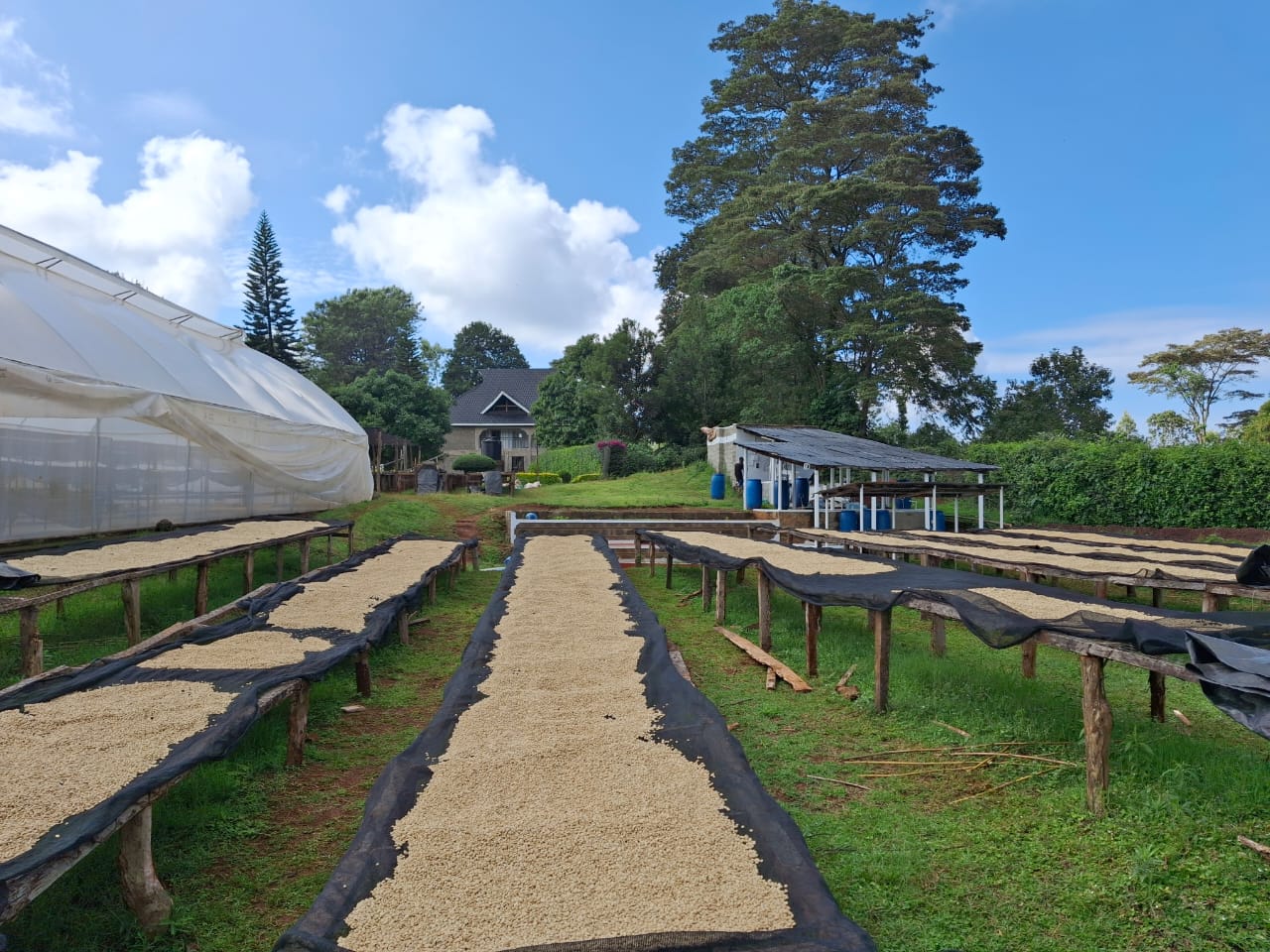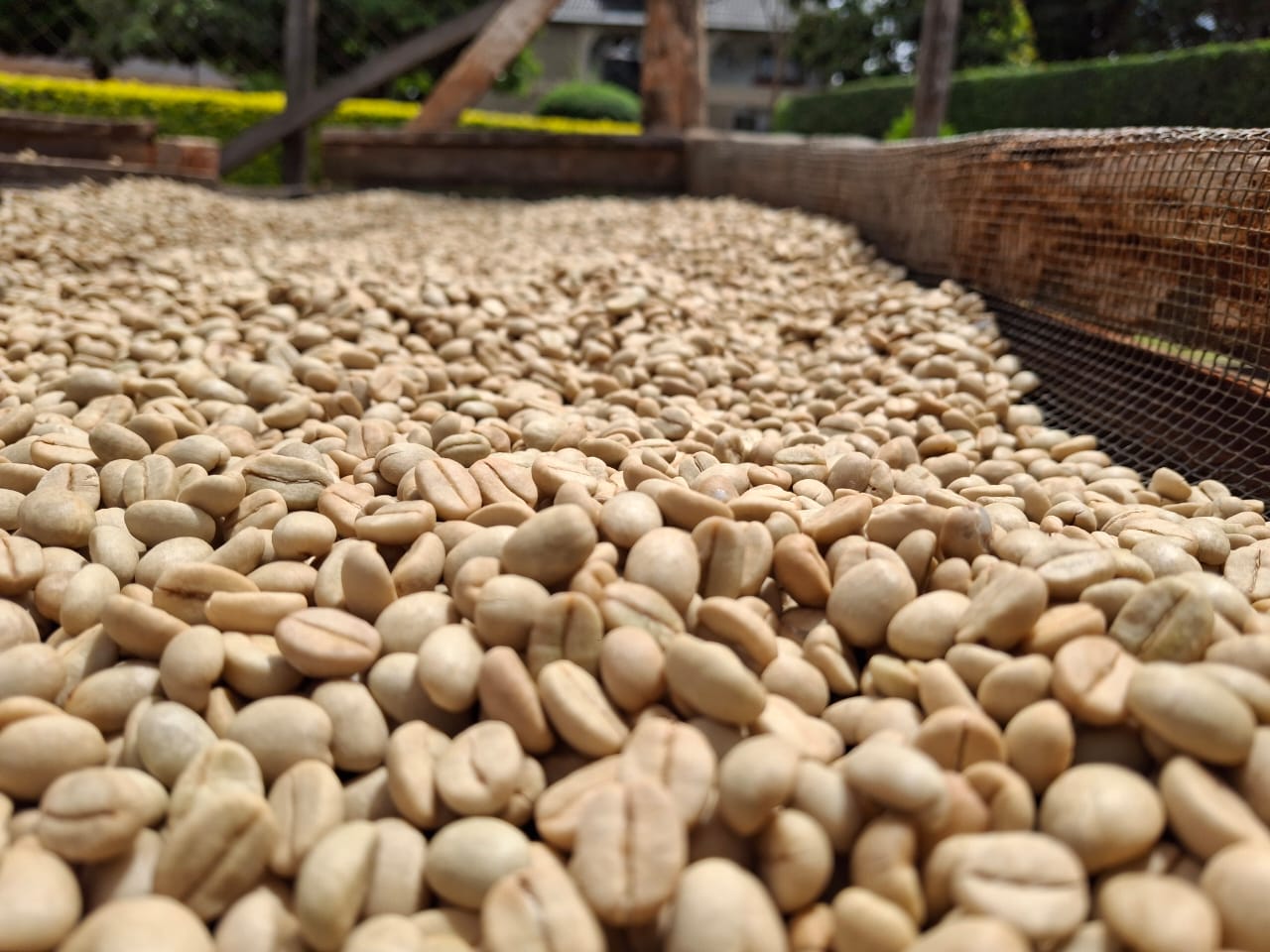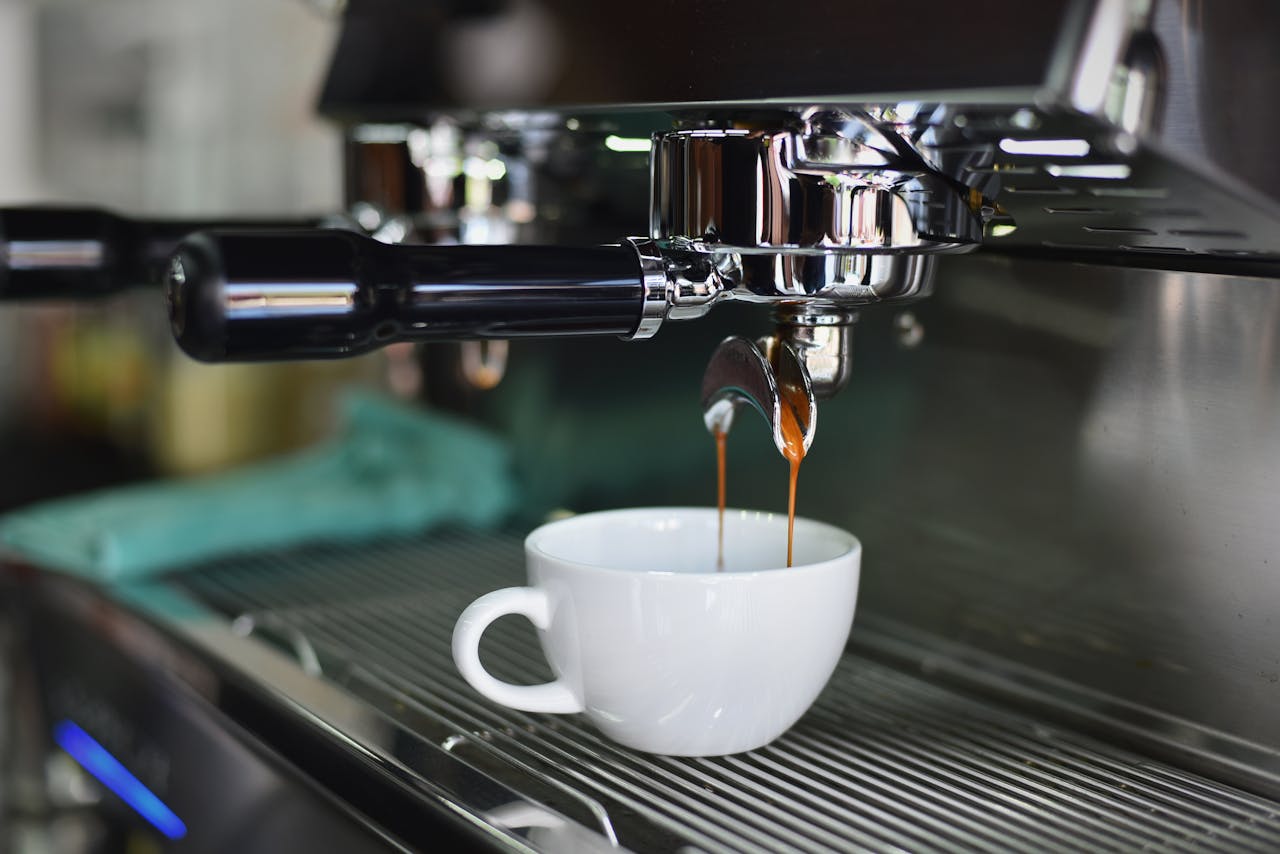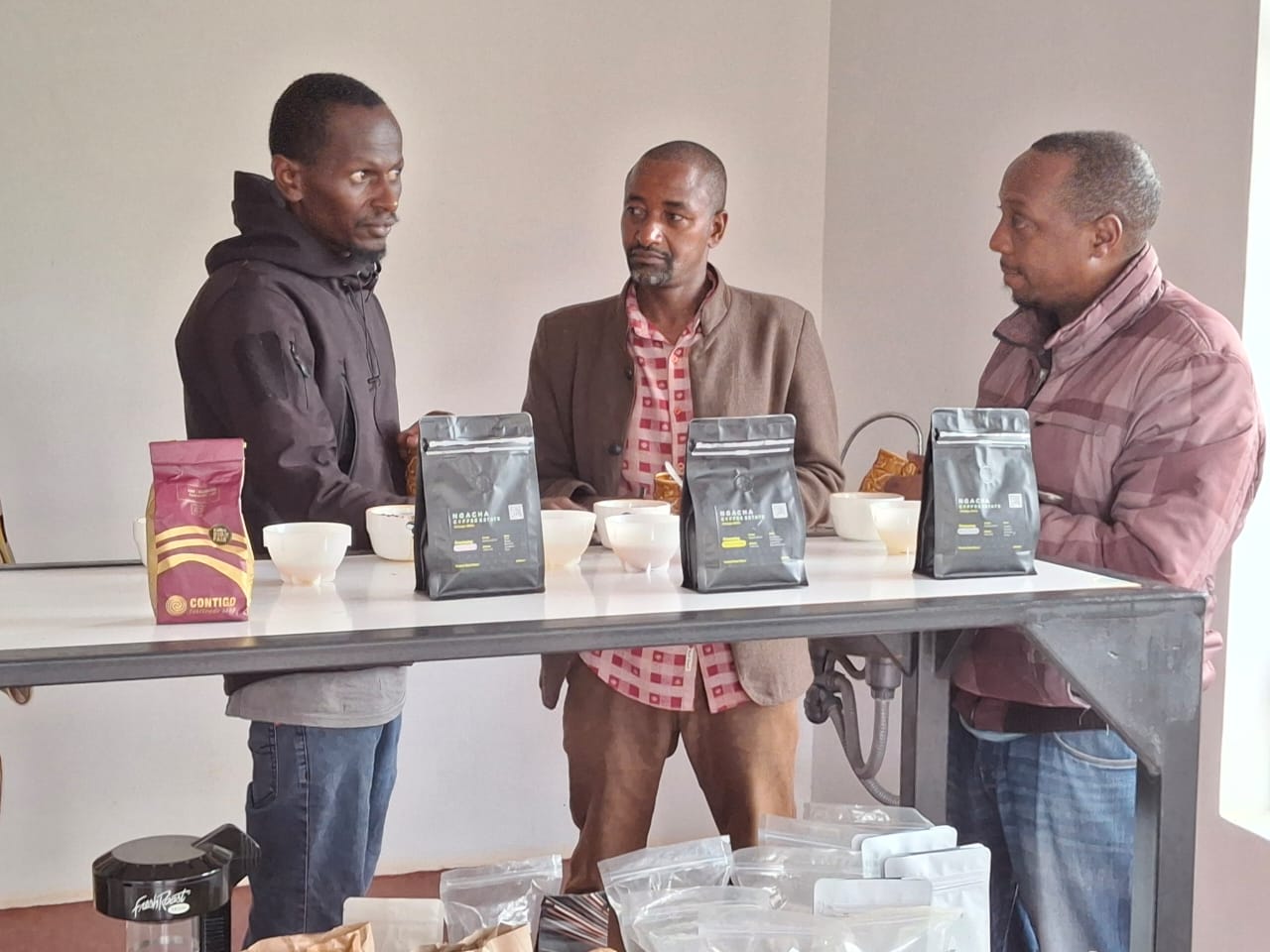Coffee Processing
Fermentation is done to break down the mucilage from the coffee bean and at the same time, enhance the flavor. At this point, changes are taking place inside the bean that affect the cup quality. The sugar and fruit levels in the cup can be enhanced at this point.
Pulping should start later in the evening when the picking, sorting and floating work has been completed. For this specific lot, we held the cherries overnight and did the pulping in the morning (16 to18 hours later). The reason for this was to achieve a longer fermentation without exposing the coffee to overferment flavours and mold. After pulping, the we mixed the coffee beans to ensure uniform distribution of pulp that gets into the fermentation tanks. The coffee was then left leveled in the tanks with no bean stuck on the walls of the fermentation tanks. This allows for uniform fermentation.
Drying the coffee.
The coffee is first dried in the skin drying tables. At this stage, the coffee was first dried under low temperatures under shade. This is done to prevent ,the parchment from cracking. The parchment protects the bean so once its broken, the bean inside then suffers shock from direct heat from the sun. this can have a negative implication on longevity of the bean.
After skin drying, the coffee was then taken to the main drying tables for further drying. The coffee was dried slowly initially to avoid cracking the parchment. The coffee was dried further until it attained the parchment moisture content of between 8.5% to 9%. The recommended moisture level of the green should be between 9% to 10.9%. from my experience, the moisture level of the green beans is usually 1-2 points higher than the moisture content of the parchment.




